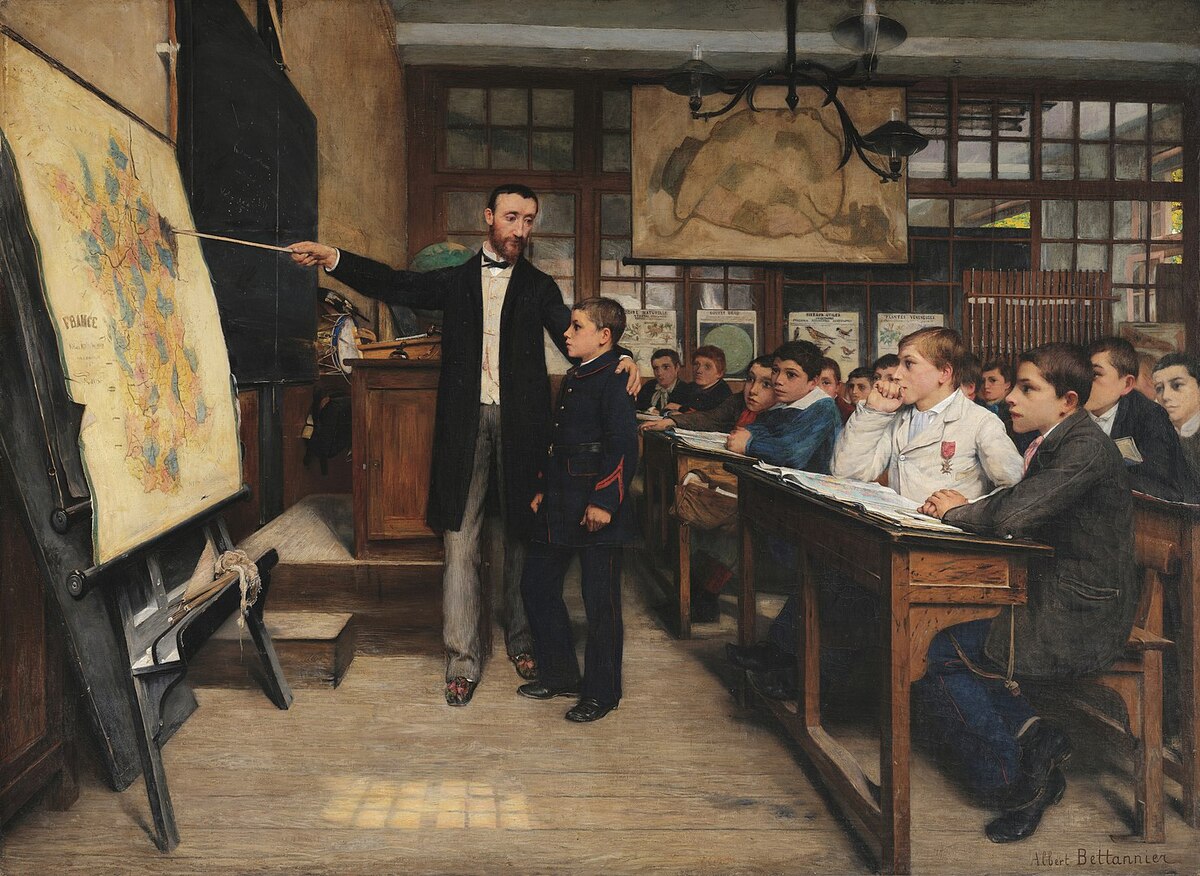Abstract
As part of the Treaty of Frankfurt (May 10, 1871), which marked the
official end of the Franco-Prussian War, Germany annexed
Alsace-Lorraine, a move that substantially contributed to the persistent
hostility of defeated France toward the newly founded German Empire. The
annexation of Alsace-Lorraine, which the French regarded as a grave
offense to the “Grande Nation,” is the subject of this painting by
French artist Albert Bettanier titled La
Tache noire ou La leçon de
géographie [The Black Spot,
or The Geography Lesson]. As the
painting makes clear, resentment and revanchism were instilled in French
citizens from childhood onward. German Chancellor Otto von Bismarck was
aware of the dangers posed by a vengeful France but had followed through
with the annexation nonetheless. For the remainder of his chancellorship
he attempted to vanquish his “cauchemar des coalitions” (“nightmare of
coalitions”) – ones directed against Germany, to be precise – by
designing an elaborate system of international alliances. After his 1890
resignation, however, the German government allowed the Reinsurance
Treaty with Russia to lapse, marking the first step in France’s
emergence from isolation.
